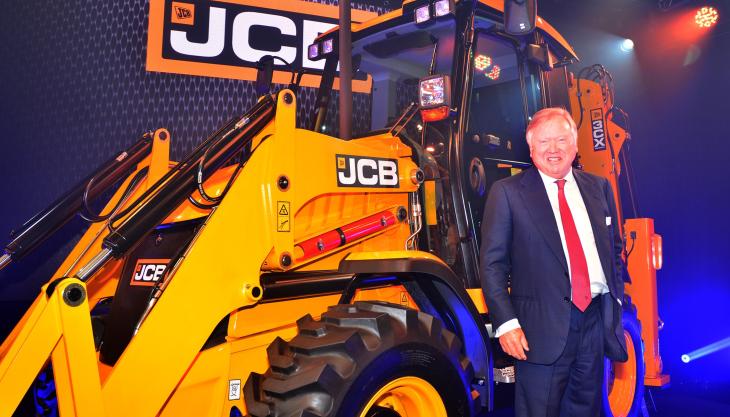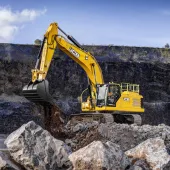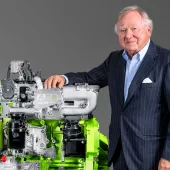JCB shrink their iconic backhoe loader

Company confident of sales growth with compact version of world-famous 3CX digger
A SHRUNK-down version of the digger that made JCB famous around the world was launched this week at the company’s headquarters.
The backhoe loader was invented by JCB founder Joseph Cyril Bamford in 1953 and since then more than 600,000 have been produced. But with modern construction sites becoming increasingly compact and congested, customers have been demanding a much smaller machine.
Now, following a multi-million pound investment, JCB have answered this call with a hi-tech 3CX backhoe loader that is 35% smaller than the standard model – yet retains all the power and speed of its bigger brother.
The first of the new machines started rolling off the production lines at the company’s World HQ in Rocester, Staffordshire, as customers from around the world flew in to see it for themselves at one of the glitziest JCB machine launches for decades.
JCB chairman Lord Bamford said: ‘It was the backhoe that built JCB into the company that it is today and made us famous around the world. As a company, though, you can never stand still; you need to innovate to grow.
‘More and more of our customers have been telling us that they need a backhoe loader that is smaller, simply because they are operating in congested towns and cities, and on narrow streets.
‘We have answered their call by engineering the 3CX Compact backhoe from the ground up. As the company approaches its 70th anniversary next month, I’m confident that this innovative machine will win us more and more customers around the world.’
The 3CX Compact is just 1.9m wide and 2.4m high, and has a turning circle of 5.8m, allowing it to turn in a single carriageway. It is capable of travelling at 40km/h and comes with air-conditioning and power steering.







